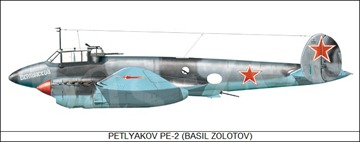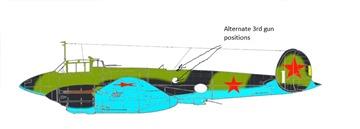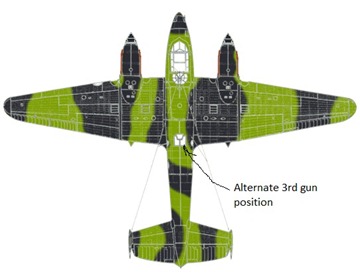Bookworm linked to an interesting article analyzing the possible performance of female members of American military in combat. While it is obvious to any sane individual that lowering standards in order to allow women to participate in combat will be deadly, it is useful to look at historical examples of women in combat and analyze possible advantages that women might have over men. These historical examples do not need to be from some ancient history. World War 2 examples are very relevant for this purpose.
1st, let’s mention something that, while extremely dangerous, does not necessarily involve direct combat: intelligence and sabotage work. Here is one example, but really, to list them all a book is required. The advantages are obvious: women often attract less suspicion than men. And, while such operations often do not involve direct combat, they come very close to what often Special Forces do.
2nd example is snipers. Female snipers were quite numerous in the Soviet Army during World War 2. The most famous one was Lyudmila Pavlichenko. During defense of Odessa and Sevastopol she was credited with 309 kills. There were others: Marie Ljalkova, Ziba Ganiyeva, Nina Lobkovskaya and Tanya Baramzina. These are just the ones I found in Wikipedia. There were much more, it’s just too hard to find info on them. However, according to the Wikipedia articles I found, the Soviets had Central Women’s Sniper Training School, so obviously there were more than I listed. Do women make better snipers than men? Well, it is quite possible: they tend to be more patient in stalking their prey. Indeed, in the animal kingdom it is often female species who are hunters (lions, for example). The modern example is the story about female snipers hired by the Chechen fighters in North Caucasus. While it is hard to say whether the story is true, this certainly seems plausible.
3rd example is perhaps the most famous one. The Soviets had 3 female Air Force regiments: 586th Fighter, 587 Bomber and 588 Night Bomber. The 586th Fighter Regiment was assigned to air defense duties for covering rear areas from German attacks. As such, it saw less combat than a front line unit would, although it participated with distinction in the Battle of Stalingrad. However, a couple of girls were transferred to the regular (male) front line units, and there they showed what they were capable of. Lilya Litvyak scored 11 personal kills, plus 3 shared, while Katya Budanova seems to be credited with 11 kills total. These results were achieved in less than a year: unfortunately both girls were killed in combat. In addition, Lilya Litvyak had another unusual kill to her credit, which showed some out-of-the-box thinking. As described in Anne Noggle’s “A Dance with Death”, at one point the Germans were using an observation balloon for artillery fire correction. Nobody could take it out, as it was heavily protected by anti-aircraft fire. Previous attempts to bring it down by the fighter aircraft were unsuccessful and resulted in losses for the Soviets. Lilya volunteered to shoot it down. Rather than attempting to fly toward the balloon directly, she crossed the front line some distance away from the balloon, where there were no anti-aircraft defenses. Then she approached the balloon from the German side. By the time the Germans realized what was happening and opened fire on her, the balloon was down, and Lilya was flying back to base. I want to indulge a bit: here is the picture of the Yak-1 fighter Lilya was flying.
As a side note, Lilya Litvyak had a very good reason to fight the Nazis: ethnically she was at least half-Jewish.
But getting back to the subject at hand: do women make better fighter pilots? Again, it’s quite possible. First of all, they can be just as aggressive and competitive as men. Second, there are evidence that women can sustain higher G-forces than men. The reasons seem to be the facts that center of gravity of female body is proportionally lower than that of male (butt is wider than the upper body) and that women are usually shorter than men. The fact that women are shorter means that the blood has less distance to travel toward the brain, making women less prone to blackouts. That’s important because ability to make tighter turns at higher speeds gives tremendous advantage in air combat.
The most famous of the 3 female regiments was the 588 Night Bomber, better known as Night Witches. It was later re-designated as 46th Guards Night Bomber Regiment. The Guards designation meant that the regiment distinguished itself in combat. Stalin was not known for political correctness in the modern sense, so the Guards designation was well deserved. It was also the only one of the three that was 100% female. That included armorers who had to attach rather heavy bombs to the aircraft, so the women came up with mechanisms to help them lift the bombs. The other 2 regiments had some male personnel. The Fighter Regiment had a male commander and some male ground personnel. But it is the history of the 587th Bomber Regiment that demonstrates the capabilities and limitations of women in combat the best.
The 587th Bomber Regiment was commanded originally by Marina Raskova, who originally suggested to Stalin the formation of all-female Air Force regiments. Unfortunately, Raskova did not live to lead her regiment into combat: she died in a flying accident before her regiment was deployed operationally. Her replacement was a man, major Valentin Markov. Just like the Night Bomber Regiment, the 587th was re-designated 125th Guards Bomber Regiment in 1943, which means that it was quite successful. So, what was so special about this unit that might enable us to see the capabilities and limitations of women in combat? We need to examine the aircraft flown by those brave ladies in order to understand that.
587th (later 125th Guards) Bomber Regiment was armed with Petlyakov Pe-2 aircraft, the main Soviet tactical bomber during the war.
Pe-2 was originally developed as a high altitude heavy fighter and designated VI-100 (VI stands for “Vysotny Istrebitel’” – High-altitude Fighter). However, it was later decided to re-design it into a dive bomber. As a dive bomber it was re-designated as Pe-2. This aircraft was used for both dive bombing and level bombing. It retained many of the fighter-like characteristics. Indeed, its speed of 540km/h (335mph) exceeded that of many fighters in 1941. Pe-2 had a crew of 3: pilot, navigator and radio operator-gunner. The 2 forward-firing machine guns were fixed and fired by the pilot. They were aimed just like in any fighter aircraft: by aiming the plane itself. The dorsal gun, protecting the upper rear, was installed in a turret behind the pilot’s cockpit and fired by the navigator. The radio operator-gunner fired the 3rd gun. Its default position was ventral, protecting the lower rear. It was also often used for strafing enemy on the ground. However, this 3rd gun could be moved, as shown below.
This gun was quite heavy: either ShKAS or UB. To be able to move it quickly, aim and fire required upper body strength. That is why the position of radio operator-gunner was for the most part filled by men. Women simply could not operate that gun effectively.
Finally, let’s analyze the problem that is not physical, but often brought up as a one of the reasons why women should not serve in combat units. That problem is sexual tension. As a side note, that is also often an argument against gays in the military. Does this problem exist? Sure, it does. In fact, it could be argued that it led to Lilya Litvuak’s demise. During Lilya’s time in 73rd GvIAP (Russian for Guards Fighter Aviation Regiment) she became romantically involved with another pilot, Alexey Solomatin. Relationship was quite serious, and they got engaged. Unfortunately, Solomatin was killed in an accident, while he was training a new pilot. Lilya became understandably distraught and started constantly seeking combat missions without taking any time to rest. That took its toll, and on August 1, 1943 her luck ran out. But a situation like this one could happen to any man in combat just as well. This has nothing to do with sex. A death of a family member or a close friend could be just as devastating, and with the same result.
So, what can we conclude from this amateur historical analysis? Well, it seems to me that women can in fact participate in combat and be successful at it, if they meet the requirements necessary for combat. The key is to keep the requirements the same for men and women, rather than to try to accommodate women who cannot meet those requirements. Thus there will be women who can be combat pilots, snipers or even covert operators. There might even be some who can participate in infantry combat, if they meet physical requirements necessary for accomplishing the mission and survival. But the stupid political correctness regarding this subject should be stopped. The requirements should be based on what’s necessary for successful mission and survival, not diversity. Thus, in those areas, where women are not at a natural disadvantage, they will succeed in higher numbers than in other areas. And that’s OK. Stupid social experiments for the sake of diversity should not be conducted in the military: the lives of our soldiers, both male and female, are at stake.




















